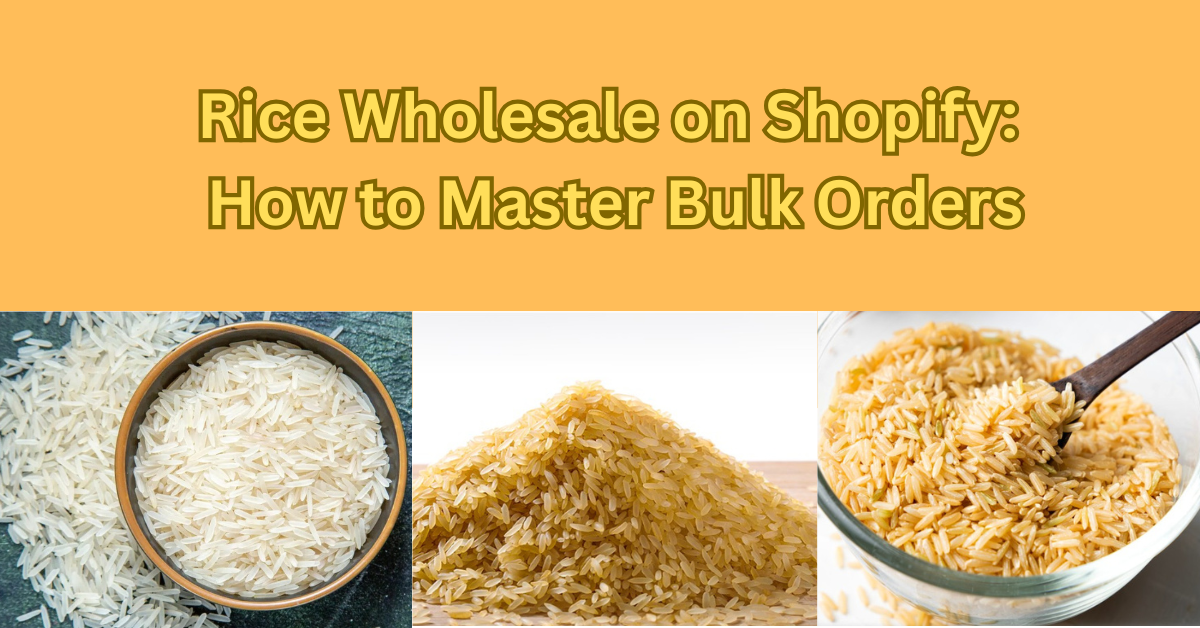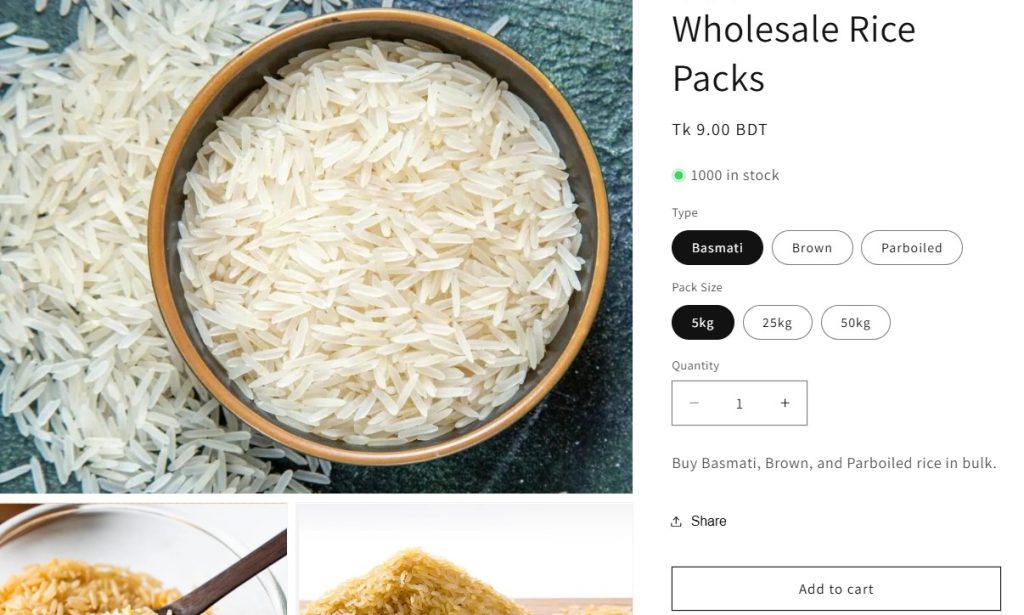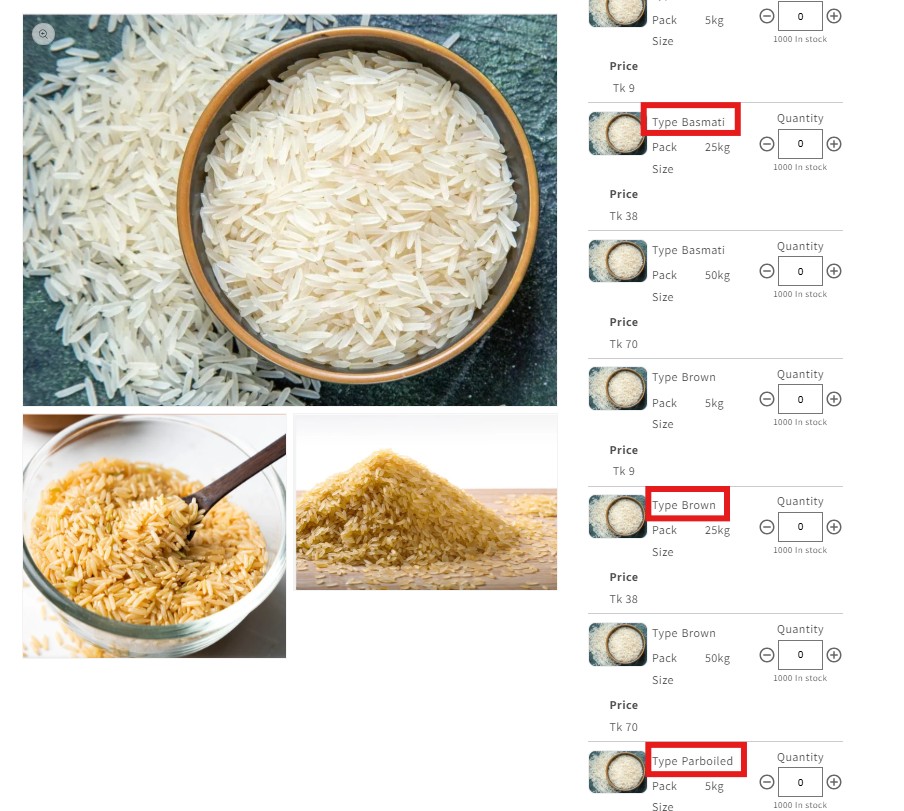
The Business Research Company reports that the rice market is expected to grow from $36.97 billion to $40.06 billion by 2025. That demonstrates the growing strength of the rice wholesale industry worldwide. From Bangkok to California, more suppliers are moving online. Restaurants, stores, and food distributors want faster and simpler ways to order rice in bulk.
Since the wholesale rice industry is booming online, we have decided to write this guide for our Shopify merchants in the rice industry. Today’s article explains how Shopify merchants can run their wholesale rice business more efficiently. It covers why bulk selling matters, the problems most sellers face, and how a bulk-ordering app can automate prices, inventory, and order limits.
So, are you ready to succeed in the rice industry online? Let’s get started!
- Manage bulk rice orders efficiently with clear variant displays.
- Set minimum and maximum order rules to prevent overselling.
- Sync inventory and enable mix-and-match for larger orders.
- Automate catalog updates and bulk price changes with ease.
Table of Contents
Why Rice Wholesale Matters for Shopify Merchants
Connecting Global Buyers and Sellers
Shopify for rice suppliers helps small and large businesses reach international markets. Farmers and millers who once sold locally can now connect with restaurants and retailers across borders.
Example:
A small mill in India can now ship to Dubai or London with just a few clicks. Buyers can reorder 200 kilograms of rice directly from the website. They no longer have to wait for calls or emails.
Better Control Over Product Listings
Running rice wholesale on Shopify gives sellers full control over how they present their products. They can:
- Show all varieties such as Basmati, Parboiled, Sona Masoori, and Brown rice
- Offer different pack sizes (5, 10, 25, or 50 kilograms)
- Update inventory automatically
- Automate your rice wholesale catalog to add seasonal items like “New Crop 2025 Basmati”
- Adjust prices anytime based on freight or currency changes
Example:
A Bangladeshi exporter can update prices for buyers in Europe or the Middle East in real time. This keeps listings accurate and saves time.
Common Problems in Bulk Rice Sales Solved By Bulk-Ordering App
MultiVariants is a powerful bulk ordering app that is made to ease Shopify merchants’ lives. Let us find out how this app, with its advanced features, makes rice wholesaling a smooth business.
Manual Inventory Work
Managing wholesale rice inventory manually is difficult. Each rice type can have many versions, such as organic, polished, or broken-grain, and each comes in multiple pack sizes. Updating these one by one takes time and often leads to mistakes.
Example:
If a supplier promises 40 sacks to two buyers but only has 50 in stock, both orders cannot be fulfilled. This causes delays and customer frustration.
Our b2b wholesale app helps prevent this by syncing with Shopify’s inventory and showing accurate stock levels or “out of stock” messages automatically.
Complicated Orders and Mix-and-Match Purchases
Most wholesale buyers do not want to order only one variety. A restaurant might want a mix such as:
- 3 × 25 kg Basmati
- 2 × 25 kg Brown
- 1 × 50 kg Parboiled
Shopify’s normal setup forces customers to add each product one at a time. That is slow and confusing for bulk buyers. A good bulk-order app like MultiVariants fixes this by displaying all rice types and pack sizes together in one grid view. Buyers can select quantities for each variant at once and complete their order faster.
Product page before implementing MultiVariants:

Product page after implementing MultiVariants:

As you can see, all the different rice types, with different pack sizes and prices, clearly appear on one page for your convenience. Different rice variants all in one place. Pretty smooth, right?
Lack of Order Rules and Quantity Controls
Wholesale merchants often need strict quantity rules. Some sell only in multiples of 25 kilograms. Others set a 100-kilogram minimum before checkout. Shopify does not enforce these automatically. So, merchants usually have to review every order by hand.
This MOQ app solves this by letting sellers set minimum and maximum order quantities, incremental steps, and mix-and-match totals.
- You can set rules like “minimum 4 sacks of any 25 kg rice” or “order must total at least 100 kg.”
- You can also restrict sales during low stock periods, such as limiting buyers to “2 sacks of 50 kg Jasmine.”
These rules ensure every order meets wholesale standards and inventory stays balanced.
Our easy-to-follow tips for configuring complex variant restrictions can help you get started with these rules.
Smarter Tools for Wholesale Sellers
It gets challenging and more complex when Merchants have to deal with large orders. MultiVariants helps Shopify sellers manage large orders more easily. These tools:
- Apply quantity rules and restrictions
- Support mix-and-match orders
- Keep stock synced with Shopify inventory
- Maintain order accuracy across SKUs
Shopify for rice suppliers builds trust because buyers can complete their entire order and payment in one place.
Example:
A supplier in Sri Lanka once handled orders through chat messages. Now, hotels and restaurants order directly on Shopify. They add products, meet quantity rules, and pay online. It is faster and clearer for everyone.
This setup matches how export businesses operate. Fixed pack sizes, quantity limits, and accurate inventory make every order consistent. Smaller mills can now sell like large exporters without custom code or extra staff.
Real-World Examples
Bangkok Exporter
Sets a rule for Jasmine 25 kg sacks: minimum 4, maximum 10. Buyers get a message if they add fewer.
California Distributor
Let’s customers mix any four 5 kg bags. When the total reaches 20 kg, Add to cart gets activated.
European Importer
Requires a $300 minimum order value. Retail buyers see the rule before checkout.
These examples show how structured quantity controls and accurate inventory make rice wholesale smoother for both sellers and buyers.
Conclusion
The rice trade is growing fast. Sellers who modernize their rice wholesale systems can grow faster, too. Shopify gives merchants tools to manage stock and handle bulk orders efficiently. Using a bulk-ordering app brings even more control. Sellers can set 100 kg minimums, manage pack sizes, and allow mixed orders in one step. It reduces manual work and helps fulfill orders faster.
In a $40 billion market, organized systems keep rice wholesale businesses running reliably. Make your business one of them.
FAQs
Can Shopify support rice wholesale businesses?
Yes. Shopify can handle multiple pack sizes, quantity rules, and pricing tiers with a bulk-ordering app.
How do I automate my rice wholesale catalog?
You can automate your rice wholesale catalog by setting clear minimums, increments, and combined totals.
What is the best approach to wholesale rice inventory management?
Use wholesale rice inventory management tools that track each product, show real-time stock, and limit orders when supply is low.
How can I update rice bag prices in bulk?
You can bulk update rice bag prices when costs change. It keeps all product listings consistent.
Why is Shopify good for rice suppliers?
Shopify for rice suppliers offers simple tools, a wide reach, and automation that make selling in bulk easier and more accurate.
